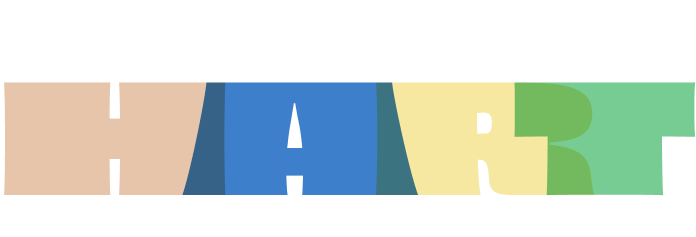
Welcome Travel A.I.
Project Overview
Welcome started with the idea that travel should be personalized and in the moment. What if we learned a user's preferences, took into account context (weather, time of day and distance) and delivered best in class recommendations?
A familiar team & a new challenge
The Welcome team is largely made up of the same people who created Cameo back in 2013, including myself.
Getting Started.

User Research
User research played a pivotal role in shaping the design process of Welcome. By conducting in-depth interviews, surveys, and focus groups, we were able to gather valuable insights into travelers' preferences, pain points, and desires, which all informed our design decisions and allowed us to create a truly user-centric experience. Additionally, testing on each of our iterations enabled us to validate our design hypotheses, refine functionality, and optimize overall usability.
Through the development cycle, we held over 50 user sessions with which helped set our north star and evaluate the continued viability and usability of the product we were developing.
Through the development cycle, we held over 50 user sessions with which helped set our north star and evaluate the continued viability and usability of the product we were developing.

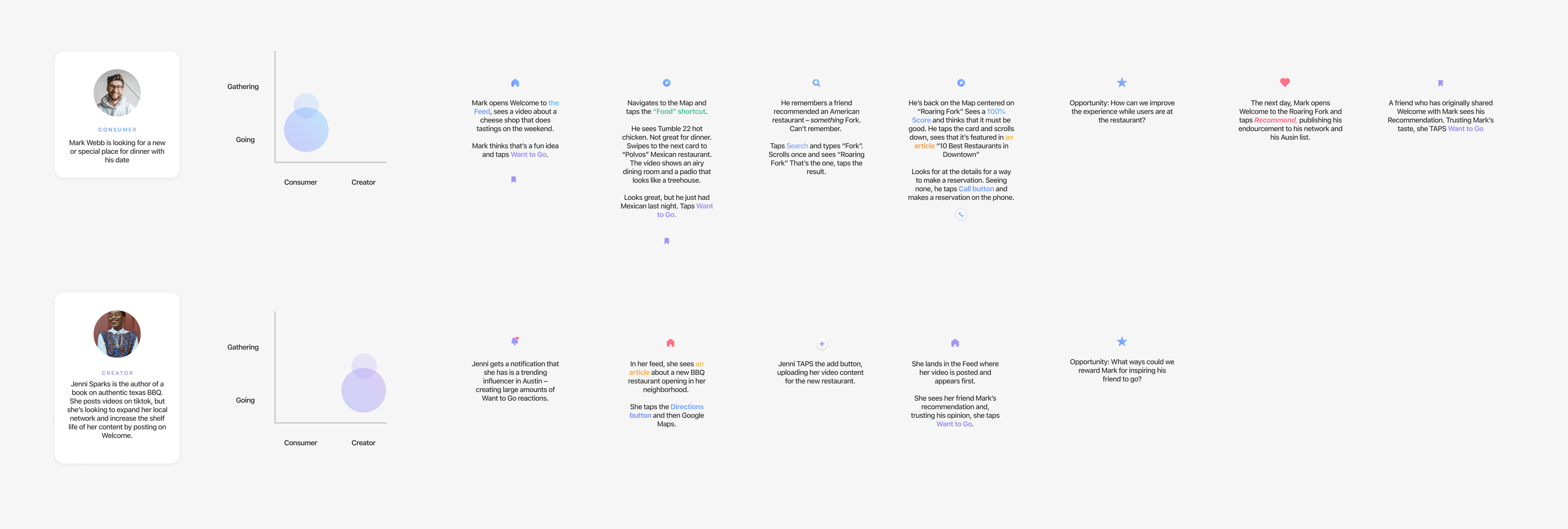
User Maps
We used different mapping techniques to help identify areas of opportunity to meet and exceed the expectations of our users. Above is a diagramming exercise to identify and design our push notification strategy. Below is a more traditional user journey with two personas based on our research.
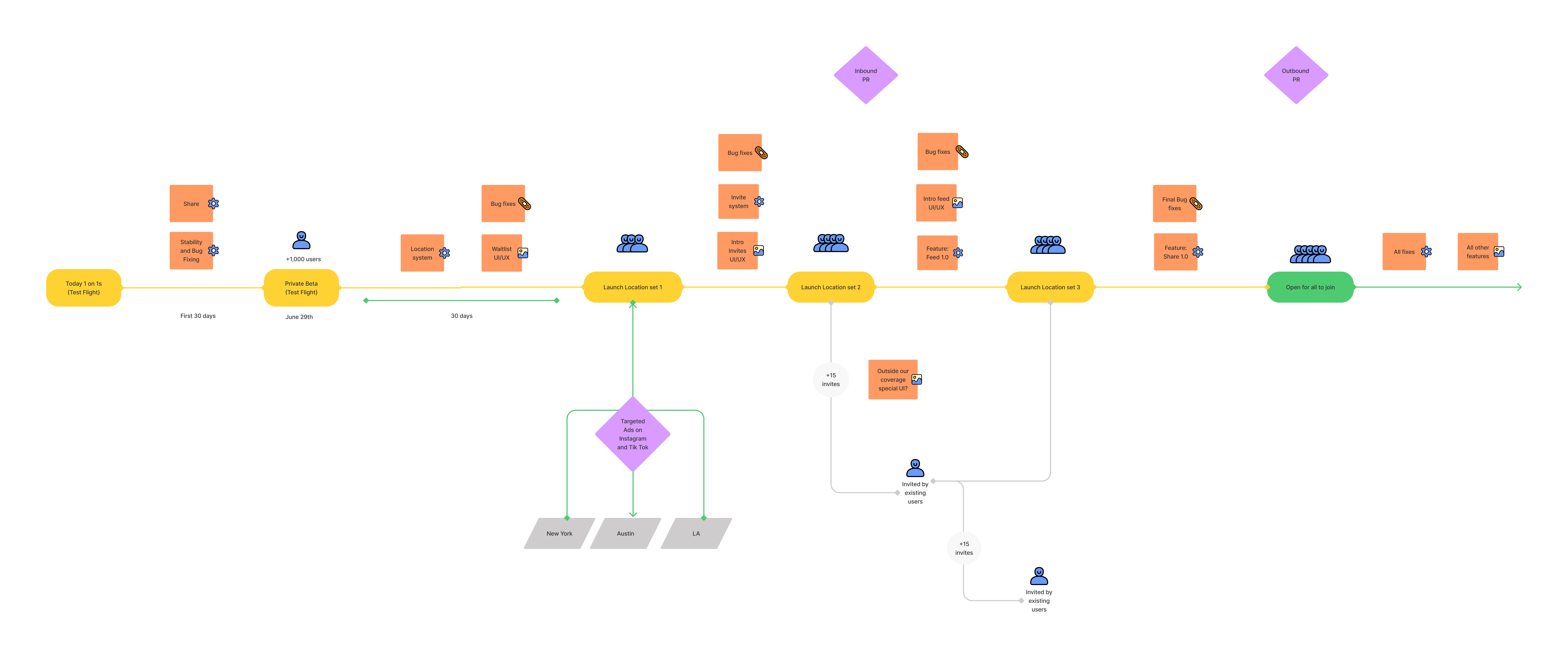
Launch Strategy & Planning
Launch strategy can be overwhelming with the amount of variables and unknowns. This diagram was one of several scenarios drawn up to help visualize and plan for obstacles and maximize growth potential. I love a good diagram to convey a complex idea 😍.
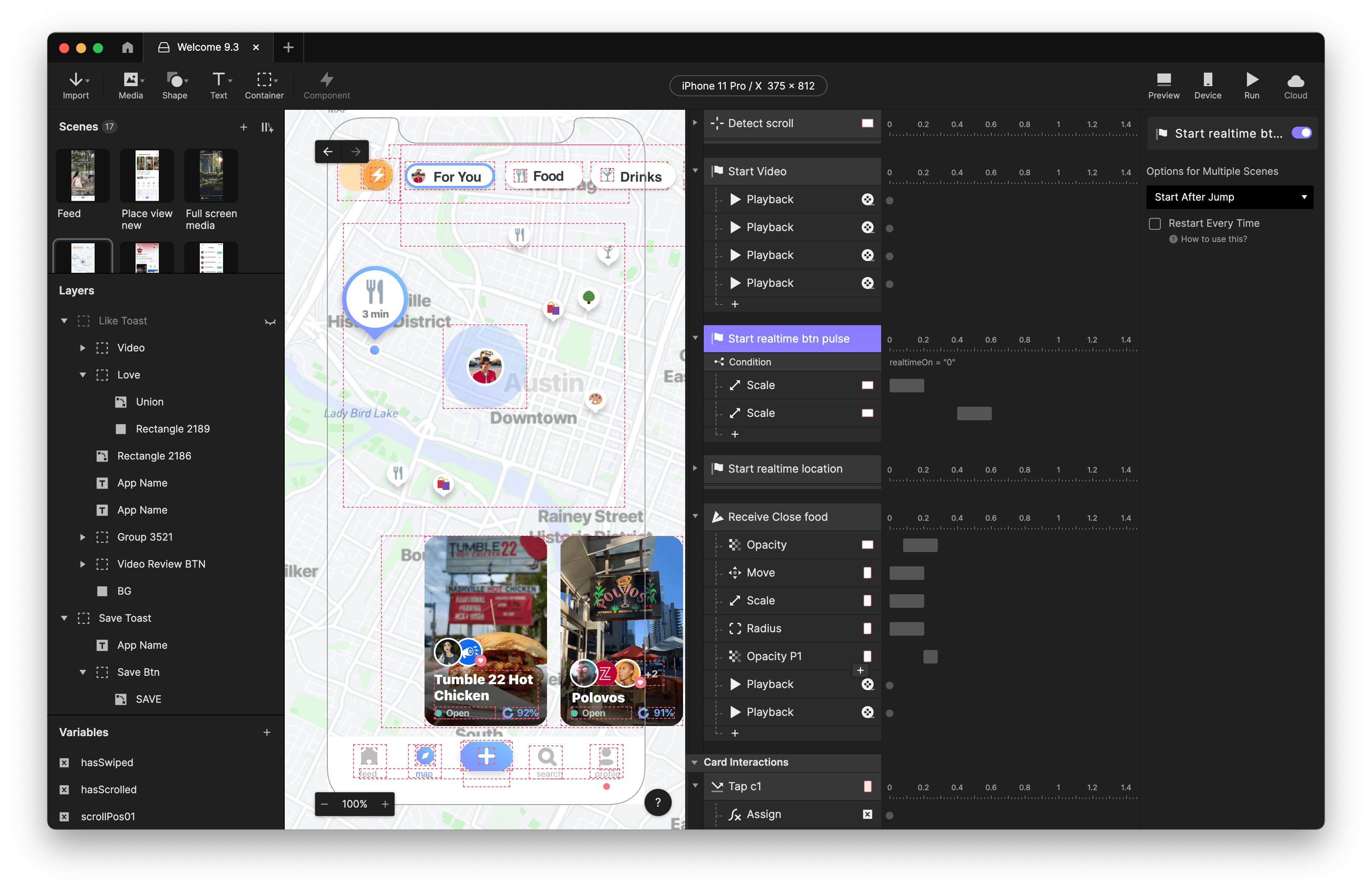
Prototyping
Prototyping plays a critical role in my process, and I take pride in keeping myself abreast of the latest and most effective methods and strategies. Over the years, I have explored almost every available method and software to strike the ideal balance between speed, functionality, and reusability. At Welcome, I relied heavily on Protopie for most of my prototyping work, and it proved to be an excellent choice for the job. By leveraging these prototypes, we were able to thoroughly validate our assumptions and conduct rigorous testing with our users before delivering features to the iOS team.
The Map.

The Map
The map is an active discovery experience for the moment you’re ready to go out. Users are presented with a series of intelligently chosen recommendations – each with a rich media preview. See essential details, like which friend has recommended it or publications who've written about a place.

Map / Pin Variants
We were constantly looking for ways to surface relevant recommendation data. Users wanted to know why they were getting certain recommendations. Pin variants would show up on the map to help users understand why they were seeing one place vs another.

Realtime
Realtime looks at all the conventual data that can help find the perfect place or activity for the user. It's Welcome's secret sauce, hence the cool lightning bolt. If the user was planning ahead or just browsing everything around them, they can turn Realtime off.
Discover Feed.
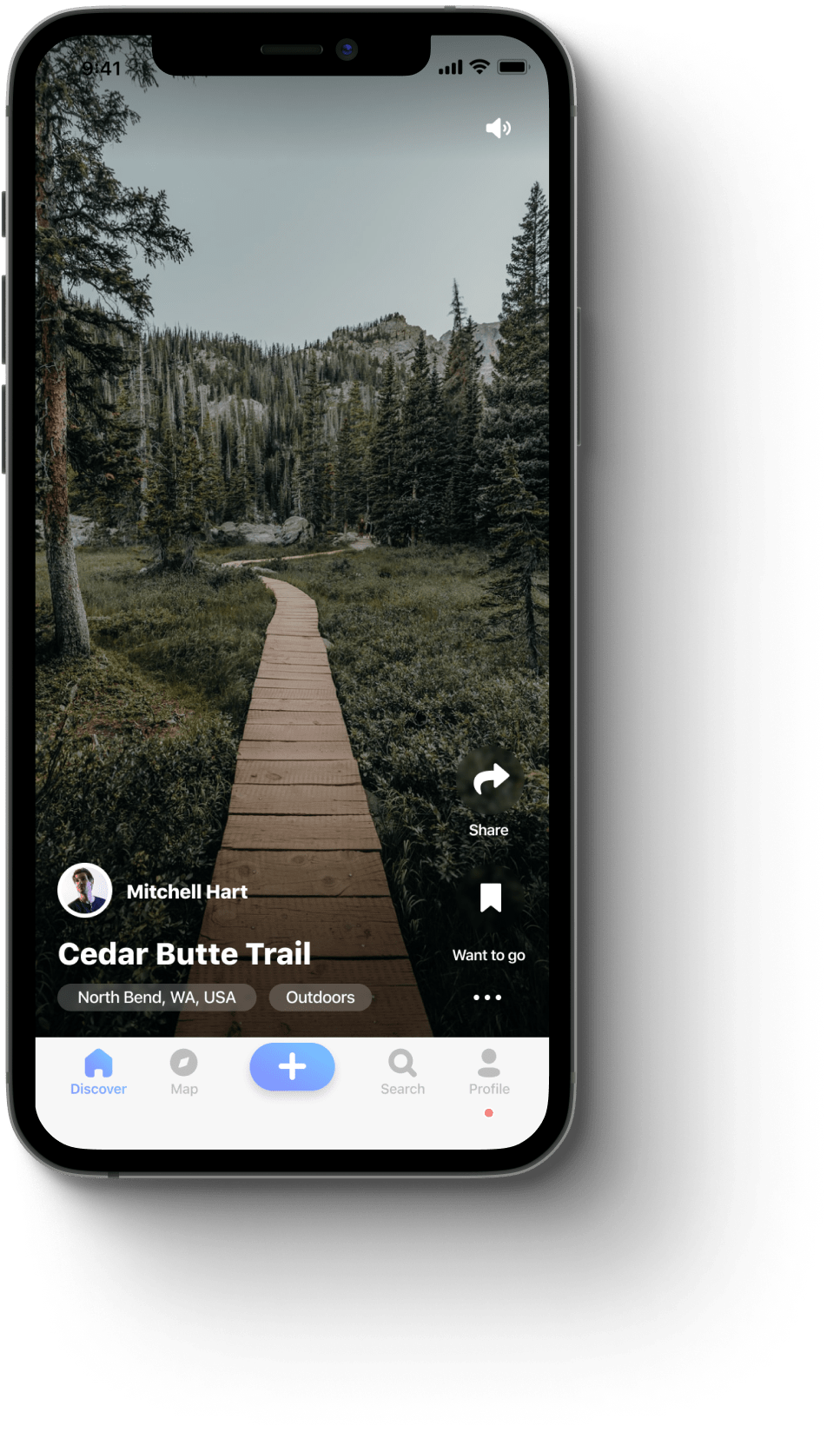
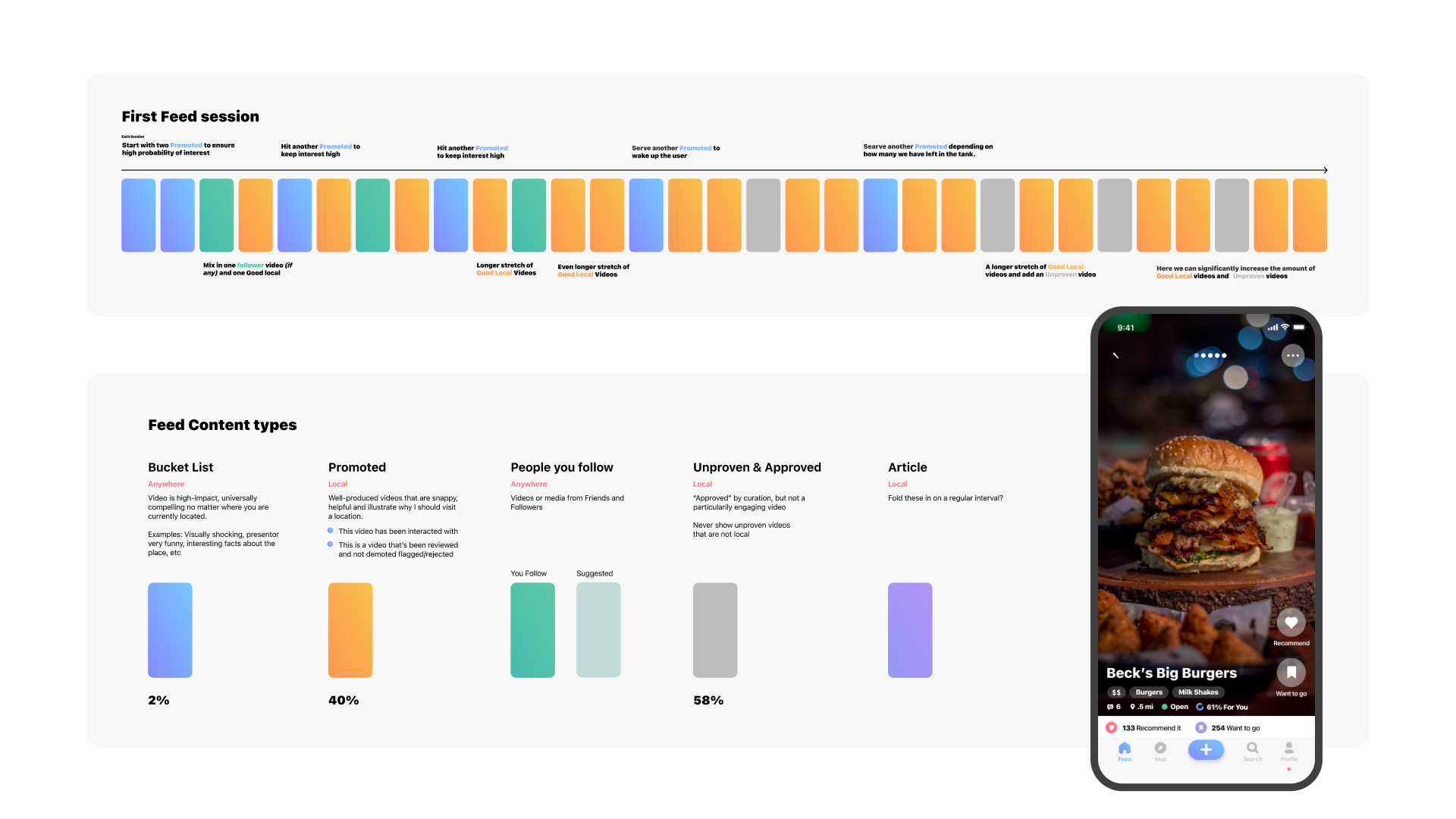
Discover Feed content strategy
The discover feed curates a captivating mix of places, all captured in vivid full-screen video. The algorithm was crafted to factor in a user's interests and in-network activity. Every interaction serves as a valuable cue to our recommendation engine, enhancing its ability to discern the types of places that a user finds most alluring.
Marketing.
These are the App Store screens that we launched with Welcome in which we attempted to entice and summarize the core value proposition.
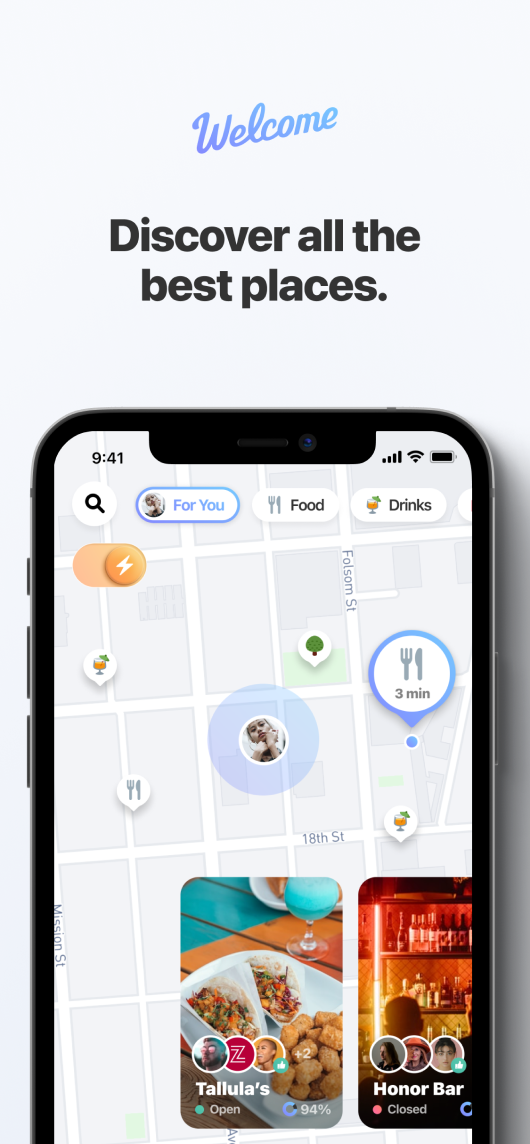
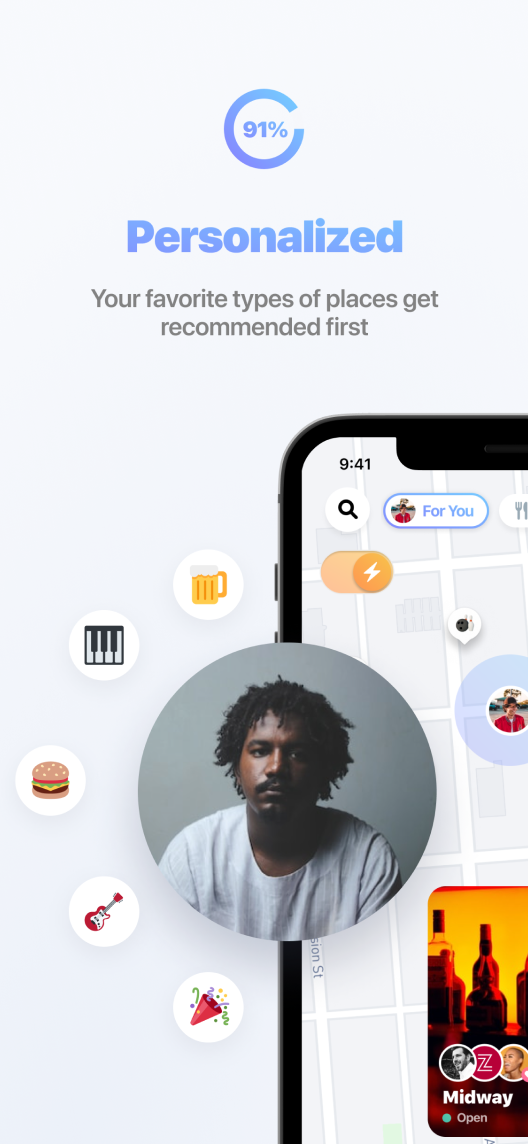
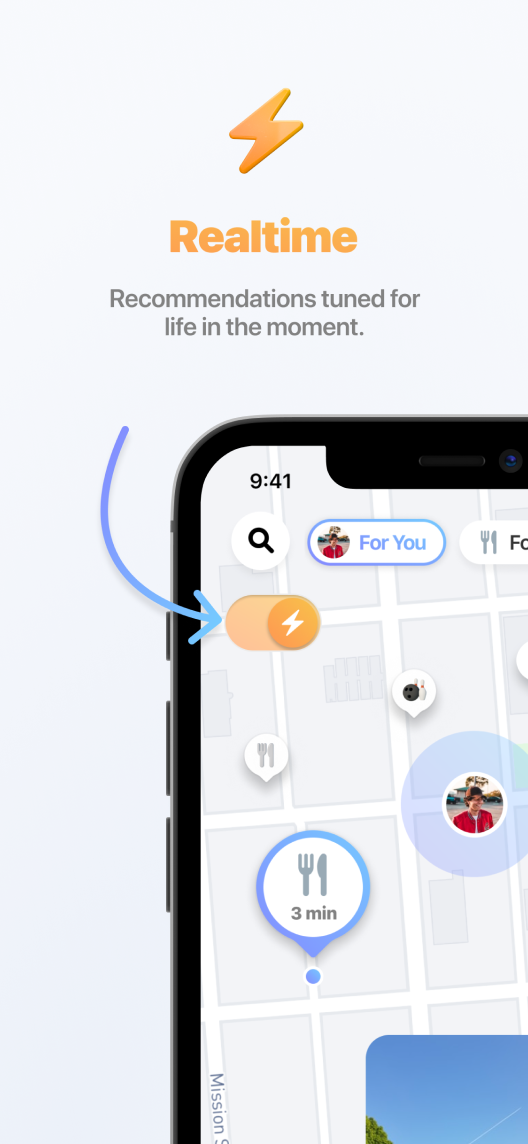
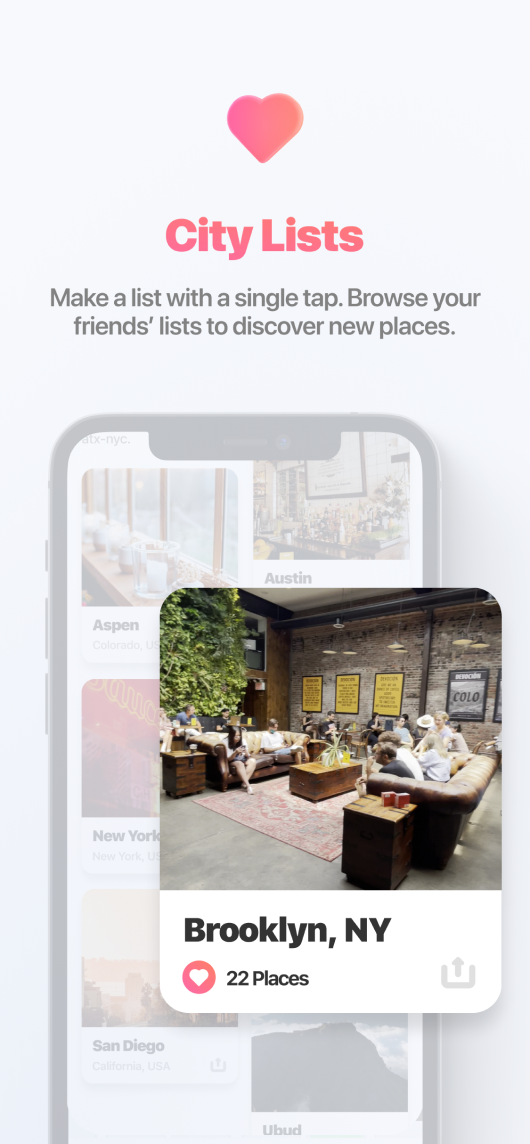
These are the App Store screens that we launched with Welcome in which we attempted to entice and summarize the core value proposition.
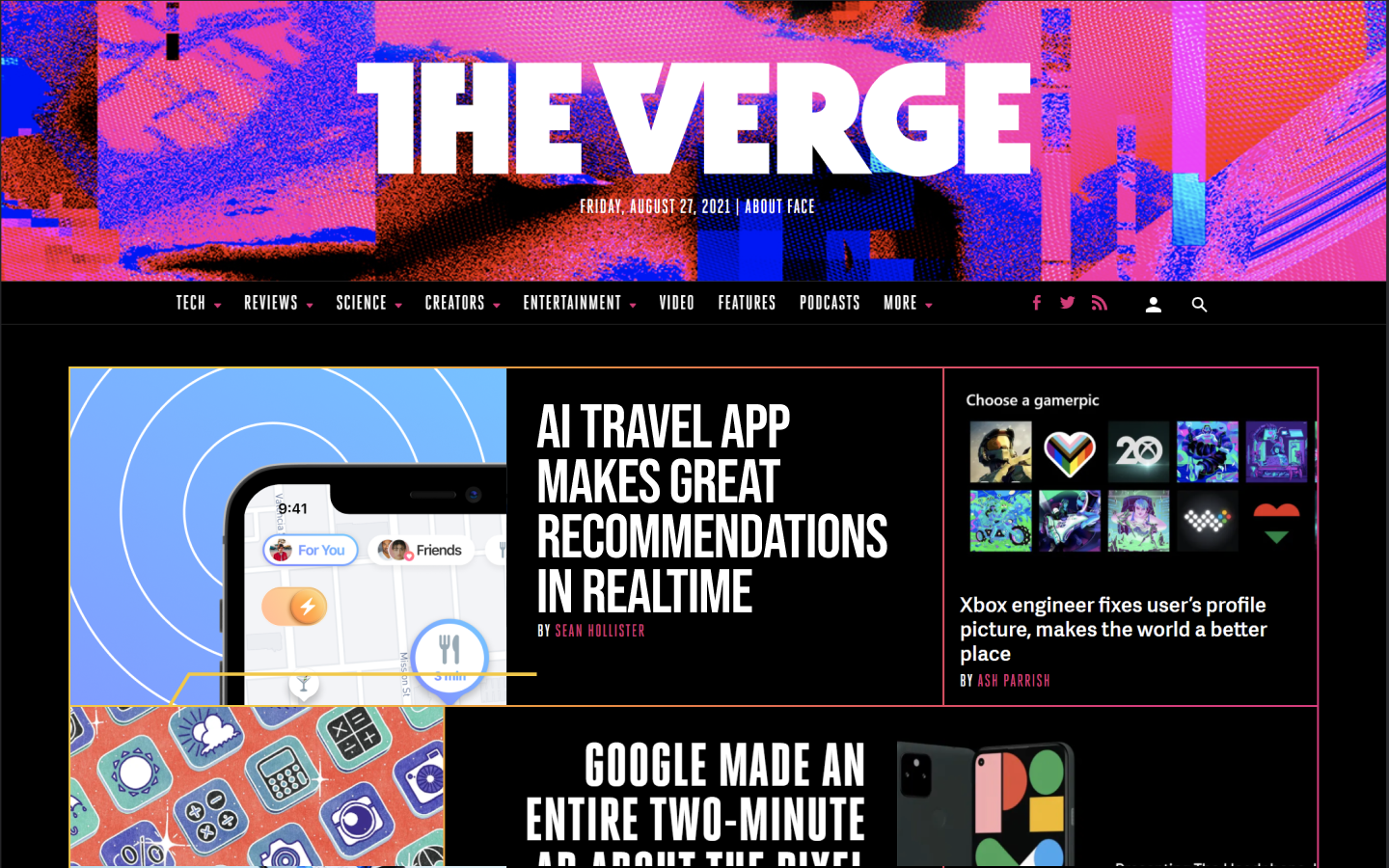
Press
We didn't land a Verge story but we sure were ready with mockups, images, videos and language.
Concepts.
Neighborhood Discovery
This was a quick exploration into how we might enable Welcome users to explore neighborhoods.
